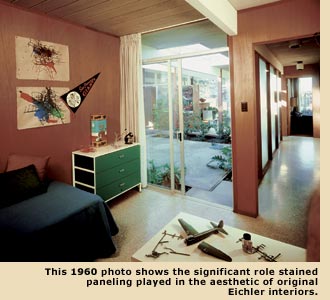Hues That Say You - Page 4
No matter what the choices, experts agree that homeowners shouldn't look at color choices in a vacuum. "When people come through the door of their home, there should be this sense of delight," Mathis says. They should be influenced by history, lifestyle, and a homeowner's personal taste and color preferences.
"There are so many correct choices," colorist Nancy Epstein says. "There's not a right choice. We are finding the right one for you."
Photos: David Toerge, John Eng, Matt Fukushima, Robert Wagner, Joel Puliatti; and courtesy Perfect Wall Color, Vetrazzo, Body Beautiful, Newlook Coatings
Special thanks to Lou Palladino of Palladino Painting, Inc., Dave Salas of California Paints (Sunnyvale), Janice Cunningham of the Lucas Valley Homeowners Association, and Catherine Munson for their assistance in compiling our chart of original Eichler paint colors
RESOURCES
Carla Mathis: bodybeautifulonline.com
John Klopf: klopfarchitecture.com
Palladino Painting, Inc.: palladinopainting.com
Paul Benson Painting: paulbensonpainting.com
California Paints: californiapaints.com
EnviroGlas: enviroglasproducts.com
It's Concrete!: itsconcrete.com
Vetrazzo: vetrazzo.com
Paint vs. stain:
|





